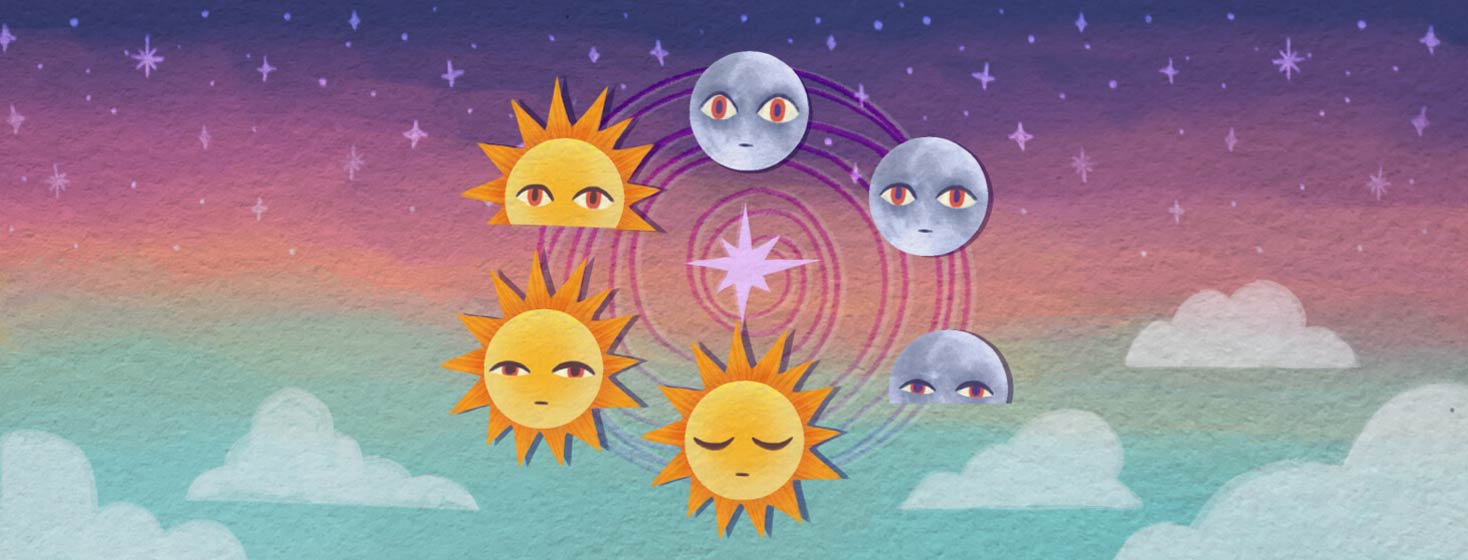Sleepless Nights Could Be a Circadian Rhythm Problem
Many people who struggle to fall or stay asleep insist they have insomniaco. But while insomnia is, by itself, a sleep disorder, it’s also a symptom of other kinds of sleep disorders.
As we near the upcoming spring time change (March 13 at 2 AM), it’s a good time to review insomnia as a symptom of circadian rhythm sleep disorders (CRSDs).
What are circadian rhythm sleep disorders?
CRSDs describe unhealthy imbalances in sleep-wake patterns. Our circadian system regulates sleep and wakefulness. It’s fueled by a master body clock that regulates all other body “clocks,” including those tiny ones in our cells.
Diurnal describes typical human circadian rhythms, which synchronize to the earth’s rhythms (light to dark, day to night, season to season). Human activities mostly take place during daylight, while resting occurs after dark on a 24-hour cycle.
Sleep patterns that divert from these rhythms may suggest one of these CRSDs.
Delayed sleep phase disorder
When people fall asleep and wake up at least 2 hours later than what’s typical, despite one’s best efforts. This CRSD can resemble sleep-onset insomnia.
Advanced sleep phase disorder
When people fall asleep and wake up at least 2 hours earlier than what’s typical, despite one’s best efforts. This CRSD can resemble sleep-maintenance insomnia.
Jet lag
The disruption of one’s body clock when traveling across 2 or more time zones. This causes temporary insomnia or excessive daytime sleepiness (EDS).
Shift work disorder
A constant, recurring pattern of sleep disruption caused by forced wakefulness during the sleep period. It results in both insomnia and EDS.
Irregular sleep-wake rhythm
A rare random sleep-wake cycle that leads to chronic insomnia, EDS, or both.
Non-24-hour sleep-wake disorder
A constantly shifting sleep-wake cycle that, while common in people who are blind, also occurs in those with sight. It leads to chronic insomnia, EDS, or both.
How to identify circadian rhythm sleep disorders
The following symptoms suggest the presence of undiagnosed CRSDs:1
- Insomnia
- EDS
- Problems awakening in the morning
- Sleep loss
- Depression
- Stress in relationships
- Poor performance at school/work
- Inability to meet social obligations
If you experience insomnia and several other symptoms listed here, it might be time to talk to a sleep specialist about the possibility you might have a CRSD.
Why? CRSDs are diagnosed and treated differently than insomnia, from medications to sleep pattern adjustments and more. They may require a “hard reset” of one’s rhythms, something you’ll need a doctor to help you achieve.
A simple circadian 'reset'
For many, the time change (in fall, spring, or both seasons) causes unpleasant side effects:2-4
- Enduring cluster headaches
- Increased appetite due to hormone imbalance
- Mood swings
- Poor focus, concentration, memory
- Drowsy driving
Good news: You can use the coming time change to give yourself a “soft” circadian reset.
Example
Starting on Wednesday before the time change, go to bed a little earlier each night (15 to 20 minutes). As an example:
- If your normal bedtime is 10:30 PM, go to bed at 10:15 PM.
- On Thursday, go to bed at 10:00 PM.
- On Friday, try 9:45 PM.
- On Saturday, 9:30 PM.
- Then, when Sunday rolls around, go to bed at 10:30 PM again (it will feel the same as 9:30 PM from the night prior).
Caveat: This method only works if you always go to bed at the same time every night — a critical aspect of sleep hygiene. If you don’t, this protocol won’t work.
Consider 'light hygiene'
Sleep hygiene is the first best strategy for improving sleep when insomnia or EDS begin to affect daily life. It describes practices that help us fall and stay asleep. (Read more about sleep hygiene.)
A big part of sleep hygiene relates to light exposure. After all, our circadian rhythms rely on light exposure to maintain our diurnal cycles.
Ways to practice good 'light hygiene'
Good “light hygiene” means using smart lighting in your workplace and home environments.
- Know your indoor light sources. Blue spectrum light suppresses the brain’s secretion of melatonin, the “sleep hormone,” which we need to transition to sleep. Electronic gadgets (smartphones, handheld gaming devices, electronic books, tablets) deliver this ultrabright light. Avoiding them 2 hours before bedtime, using blue light filters on your devices, or wearing “blue-blocking” eyewear really helps.
- Review bedroom lighting. Bright white halogen, CFB, or LED bulbs in room lighting where you spend your evenings also suppresses melatonin. Use softer pink or red spectrum bulbs instead.5
- Expose yourself to natural light first thing every morning. This creates a daily, almost effortless way to reset your rhythms. Still dark out? Use light therapy. Light boxes (also known as “happy lights”) have been shown to prevent insomnia when used in the morning.2,6,7
- Try artificial dawn. This kind of lamp “alarm” gradually increases the light in your bedroom so you naturally awaken without jarring, unpleasant noise.8

Join the conversation